BACK TO finalistS
Finalist: Architectural Category
GLORIOUS ASHES
PROJECT: GLORIOUS ASHESTHE RETIREMENT GARDEN: A COMMUNITY SPACE FOR SENIORS IN THE FORM OF A "GARDEN" 1. THE RETIREMENT GARDEN We often invest in playgrounds for children, but have we ever considered creating “playgrounds” for the elderly? With a rapidly aging population, creating areas for them is essential. The Retirement Garden offers a “garden” where […]

PROJECT: GLORIOUS ASHES
THE RETIREMENT GARDEN: A COMMUNITY SPACE FOR SENIORS IN THE FORM OF A "GARDEN"
1. THE RETIREMENT GARDEN
We often invest in playgrounds for children, but have we ever considered creating “playgrounds” for the elderly? With a rapidly aging population, creating areas for them is essential. The Retirement Garden offers a “garden” where seniors can connect, addressing aging challenges. It rests on three pillars: history (merging old and new), identity (celebrating local culture), and community (bridging generations). Instead of tearing down and rebuilding, it reuses existing resources to preserve cultural values. Guided by four principles—Retire, Preserve, Re-arrangement, Repurpose—it features three zones: Joyful Living Garden (memories, spirituality), Healthy Living Garden (sports, meditation), and Meaningful Living Garden (kindergarten, workshops, cultural preservation). Beyond architecture, it fosters a tight-knit community that honors the elderly.
2. GLORIOUS ASHES
Location: 2/9 Mangrove Charcoal Cooperative, Cà Mau – Area: 1,200 m².
In Ca Mau, Vietnam’s southernmost region, youth are leaving, abandoning the elderly and children. The century-old mangrove charcoal trade is fading due to sustainable development and clean energy shifts. The cooperative faces relocation after a 2022 fire and 2024 zoning plans, with hazardous conditions harming workers’ health. The Retirement Garden transforms this space, turning mangrove charcoal into a high-end product—exported to Japan for tea ceremonies, used in five-star restaurants, and crafted into art. This boosts income and national pride, making mangrove charcoal a global cultural symbol.
3. REBIRTH FROM CHARCOAL KILN HERITAGE
The design highlights the curves and spirals of charcoal kilns, etched in local memory. It splits into two zones: 30% original (preserving authentic architecture) and 70% innovative (linking past and present with retained roofs, recycled materials, and handicraft workshops). As a living museum, the Retirement Garden lets visitors experience charcoal production, join sculpture workshops, and hear elders’ stories, revealing Vietnamese cultural depths.
The roof design draws from the existing structure: functional parts stay, damaged ones are replaced with transparent plastic bars coated in Nippon paint. This blends solid and void, old and new, symbolizing layered meanings and letting visitors live under the shade like locals. The architectural solution forms a “rainbow light forest” using the current roof, transparent plastic, and Nippon paint for shade and airflow. Sunlight through the roof enlivens the space, reflecting the mangrove charcoal craft and local life.
Do the Elderly Really Retire?
The project is not a place for the elderly to fully retire or rely solely on pensions. Instead, it repurposes old charcoal kilns—their former workplaces, now facing relocation risks—into a meaningful new space. Here, they have the choice to continue charcoal-making or not, and if they do, it is with a fresh perspective and purpose. My goal is to shift their perception of this work: from viewing it as a ‘common labor’ to feeling pride in its role as a vital part of the nation’s cultural heritage.
Has Income Improved for Local Charcoal Workers?
Yes. By transitioning from traditional charcoal kilns to the Retirement Garden space, the project does not reduce their income but enhances it through elevating the value of mangrove charcoal, tourism-focused workshops, and heritage preservation. They continue producing charcoal in cleaner, public-oriented spaces linked to tourism and cultural pride. The project is not solely about financial gain—it also empowers them to take pride in their craft, representing Ca Mau’s identity and contributing to a global narrative.
How Will Their Lives Change After the Retirement Garden?
They will still age, and some may continue making charcoal while others may not. However, through the Retirement Garden, their perspective on this work will shift—from viewing it as a 'common' job to feeling proud because it is an essential part of the nation’s cultural heritage. I want them to feel pride—pride in their craft, pride in how it represents Ca Mau, and pride that it is now part of a global narrative. The 'Retirement Garden' is a rebirth for melaleuca charcoal and the traditional craft village. It preserves our culture, increases their income, and gives them a sense of dignity and purpose in their work during old age.
4. CONCLUSION – HOPE FROM THE ASHES
“Glorious Ashes” is more than architecture – it’s a promise of revival. From Cà Mau, where mangrove charcoal was once a fading trade, this project now shines on the global cultural stage. I hope it inspires younger generations to value spaces for elders – those who shaped our history.
As architects, we don’t just build spaces – we build legacies. “Glorious Ashes” reminds us that today’s gardens are tomorrow’s heritage. Who knows? Perhaps one day, we too will need such sanctuaries to tend the seeds of our own stories.
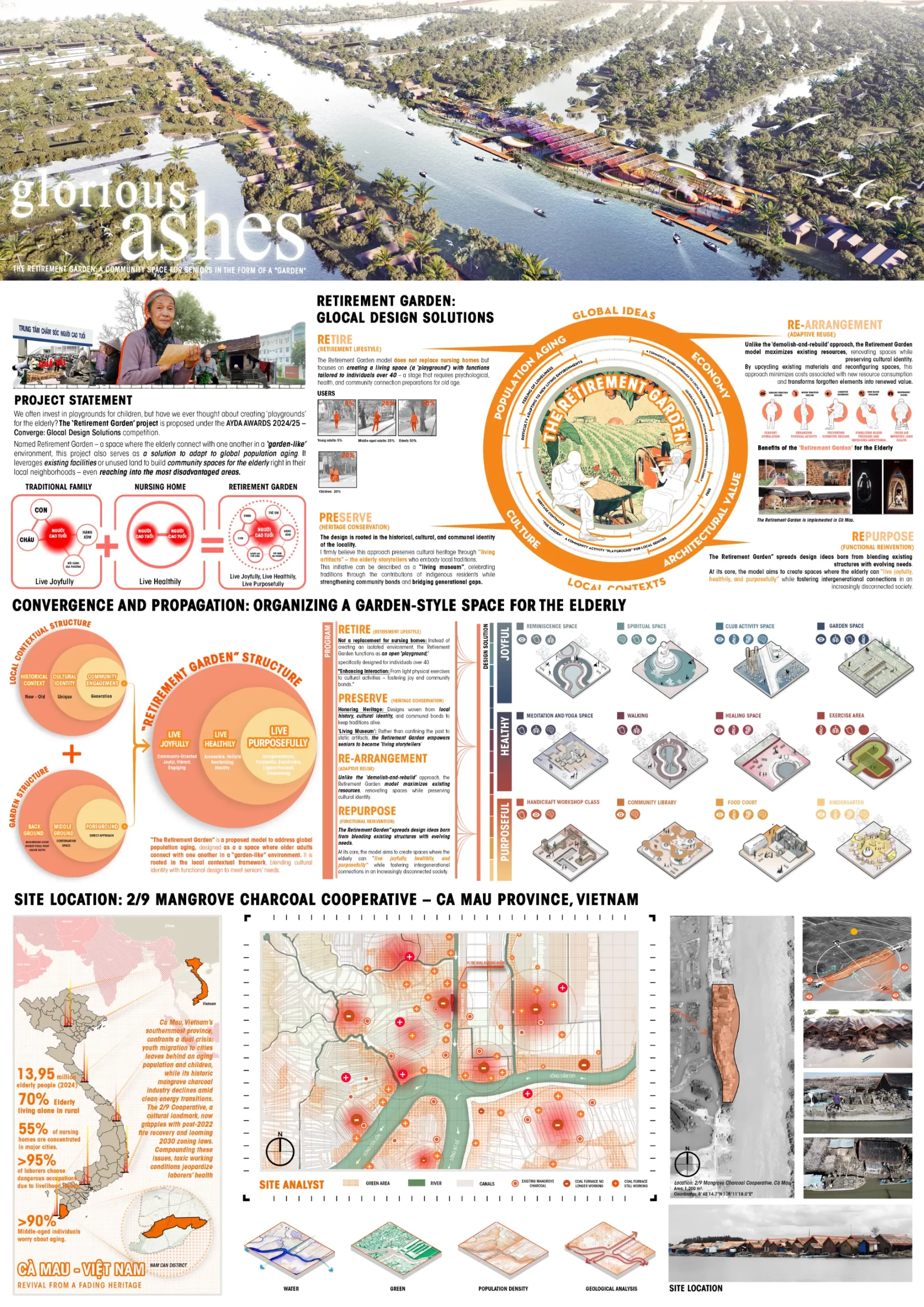
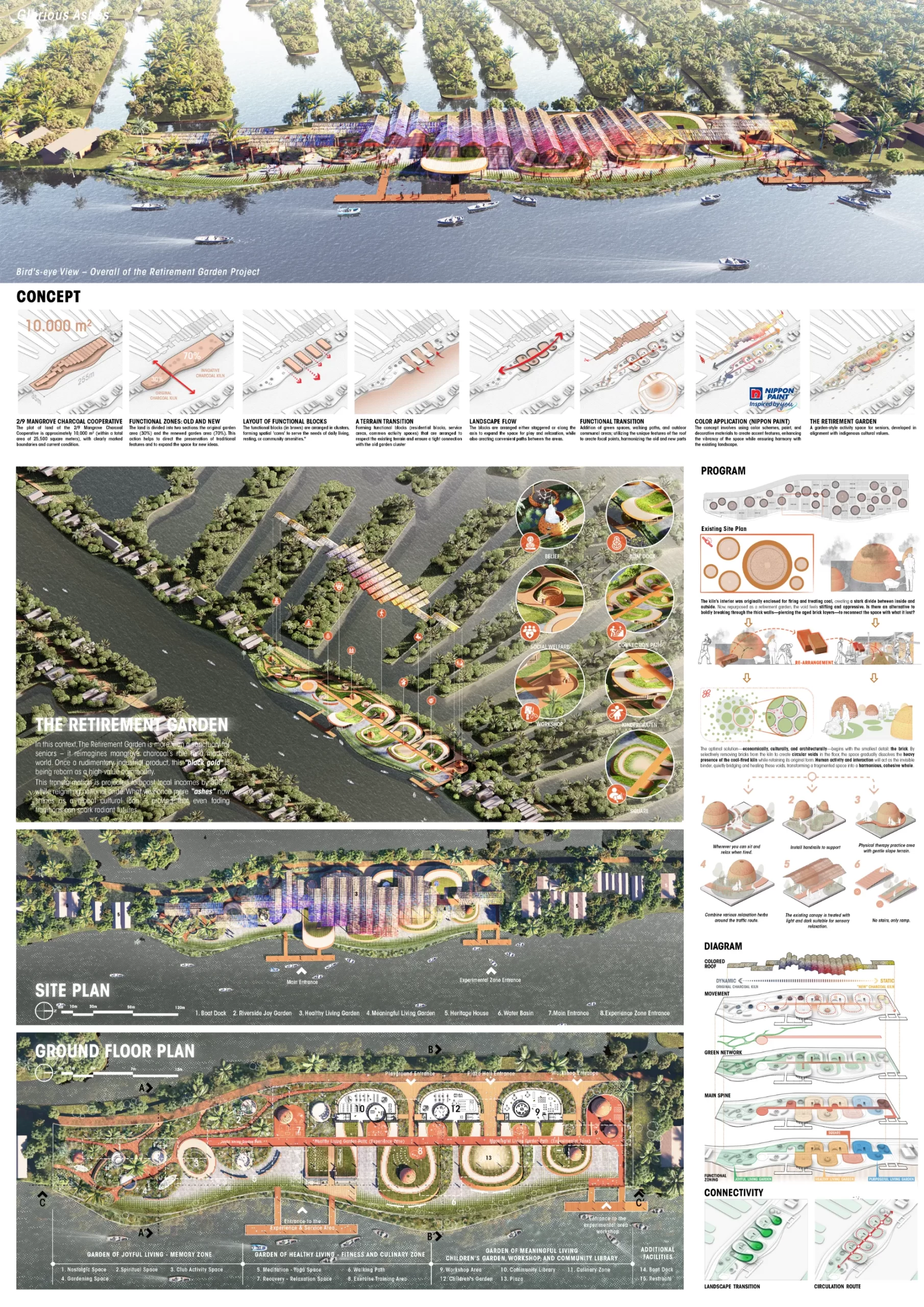
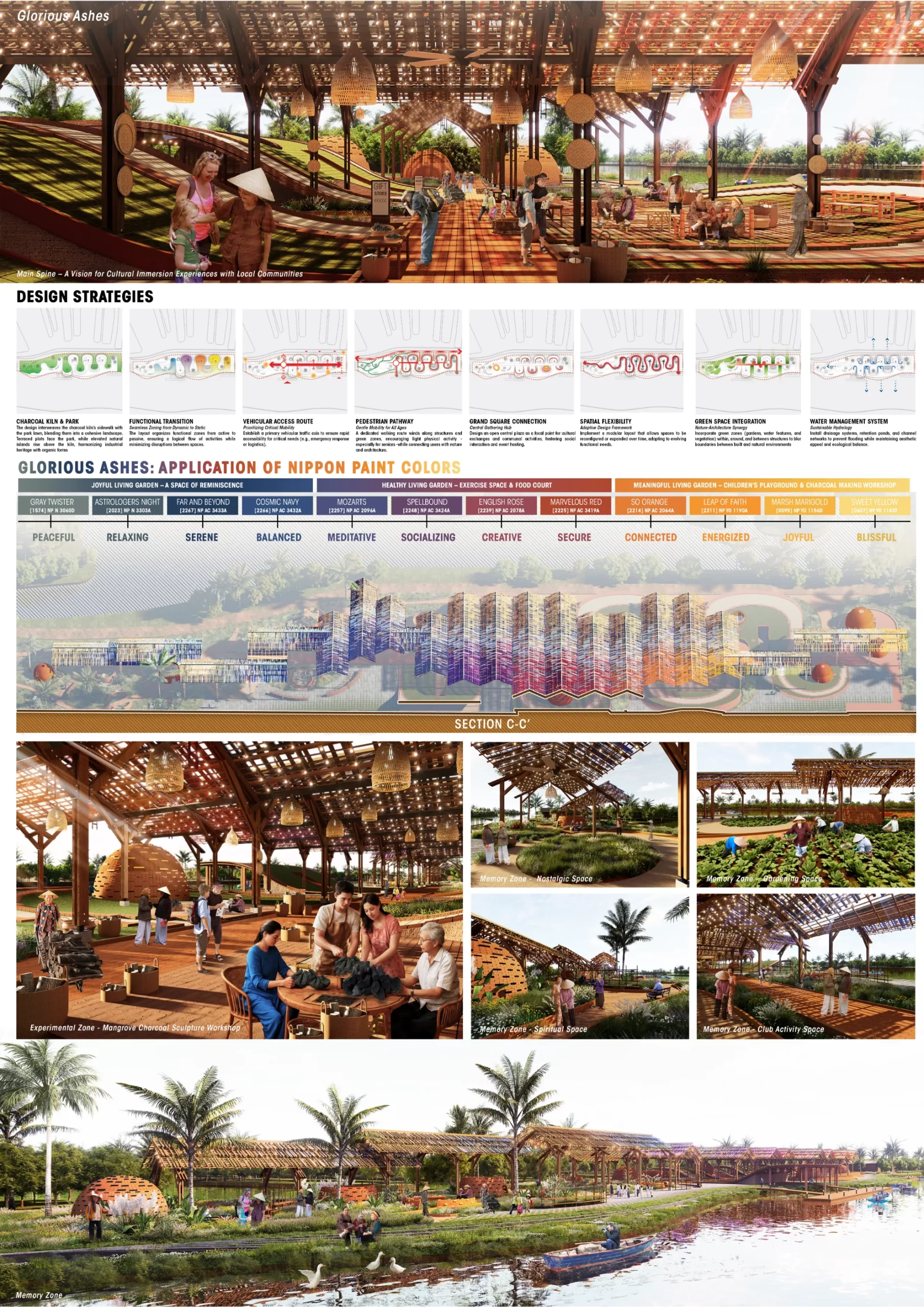
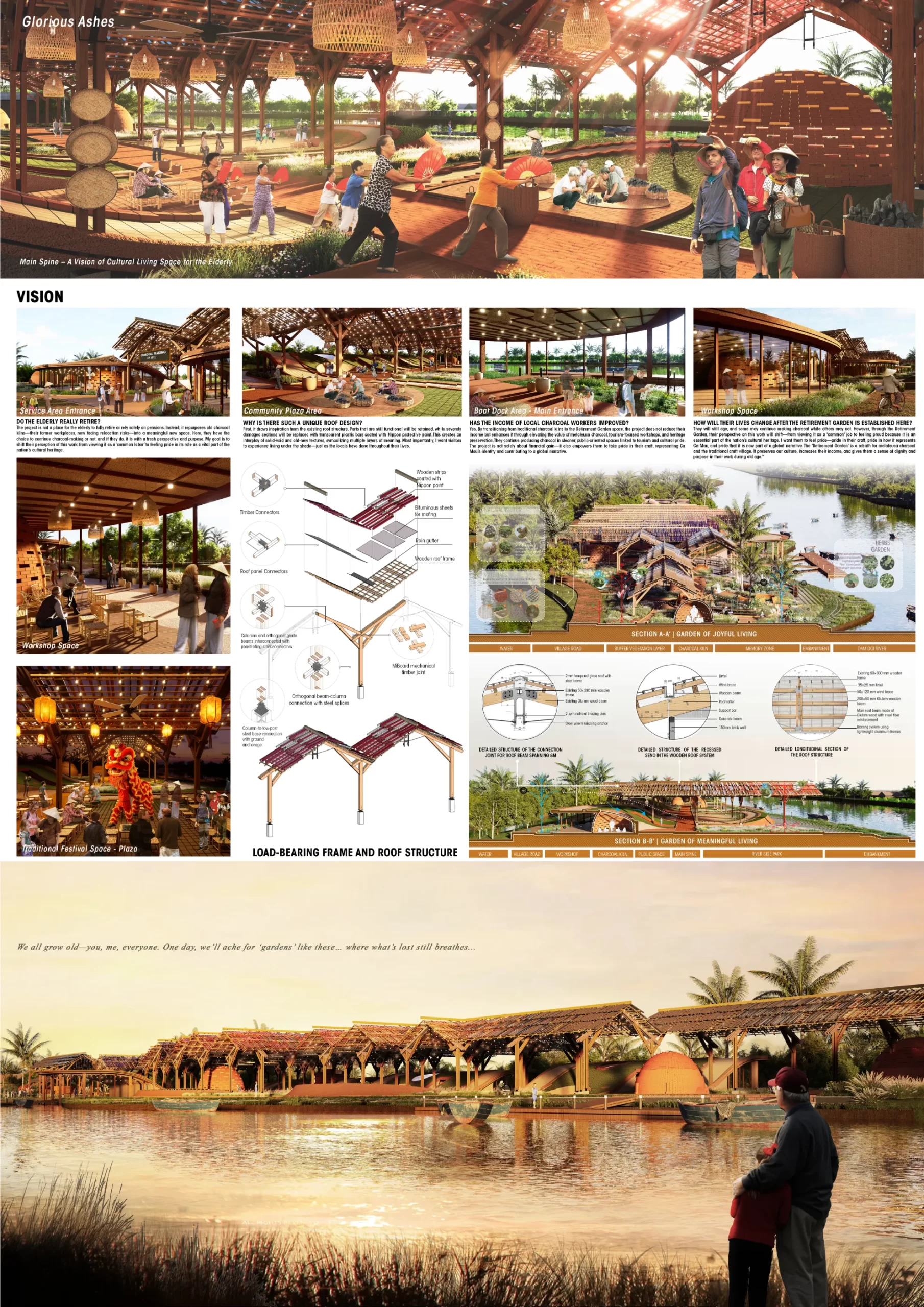
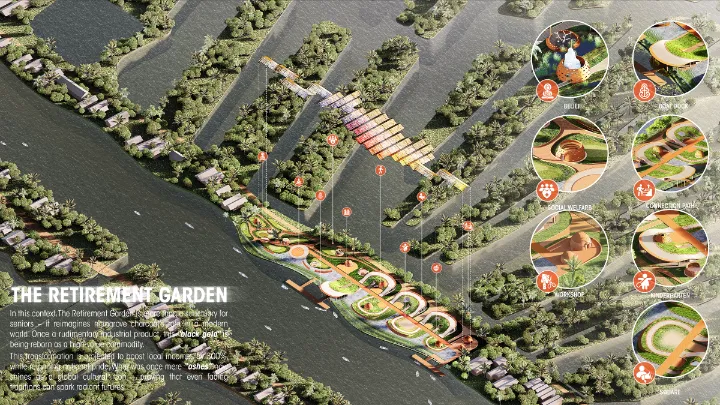


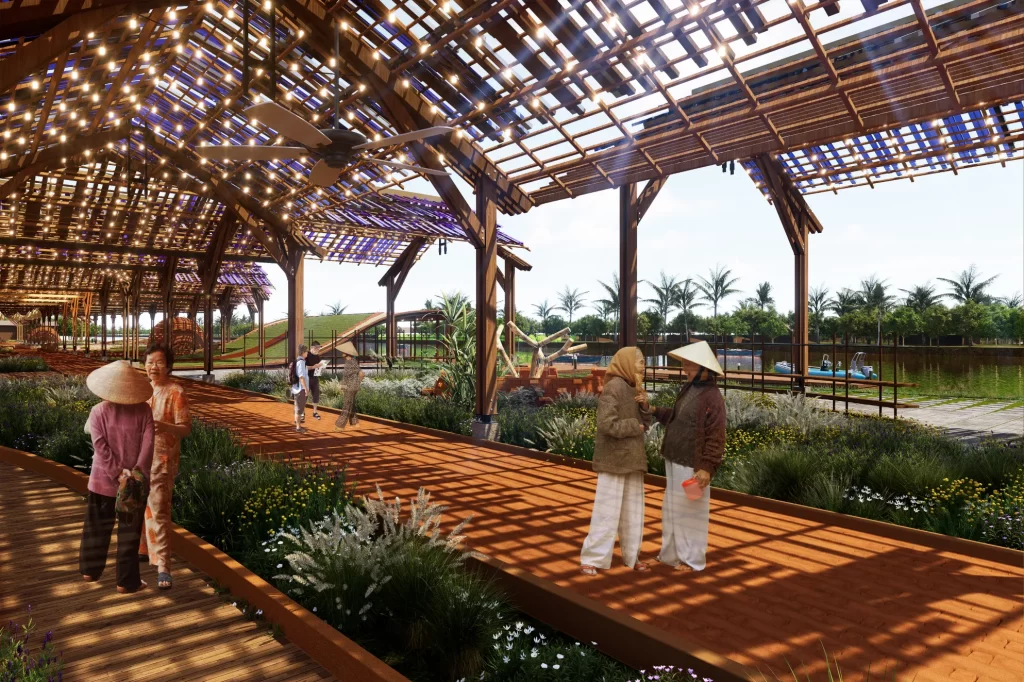
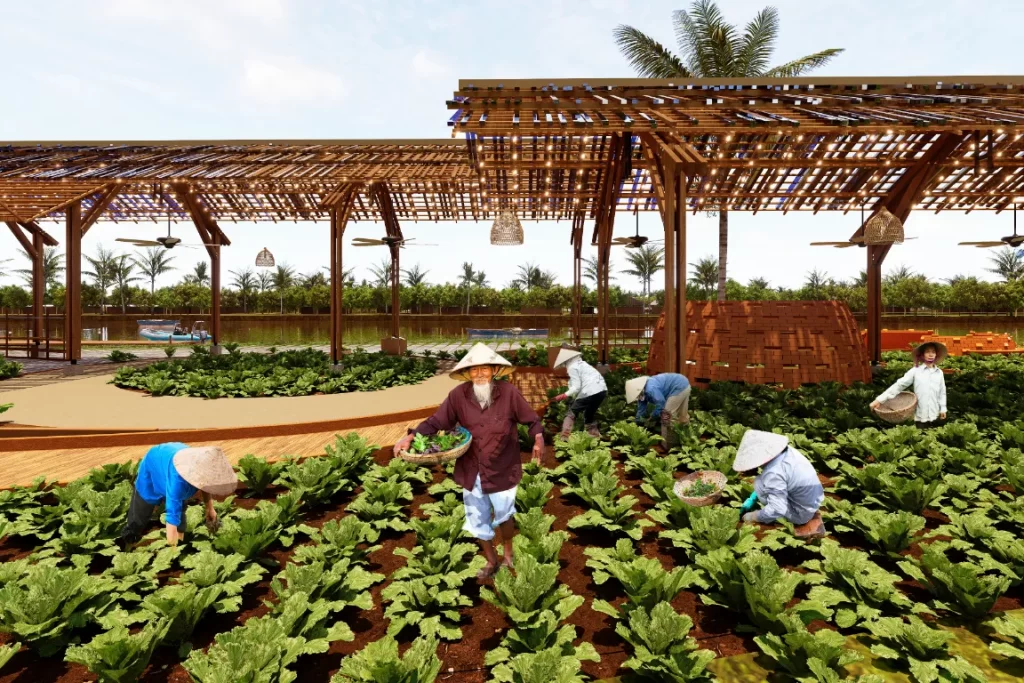
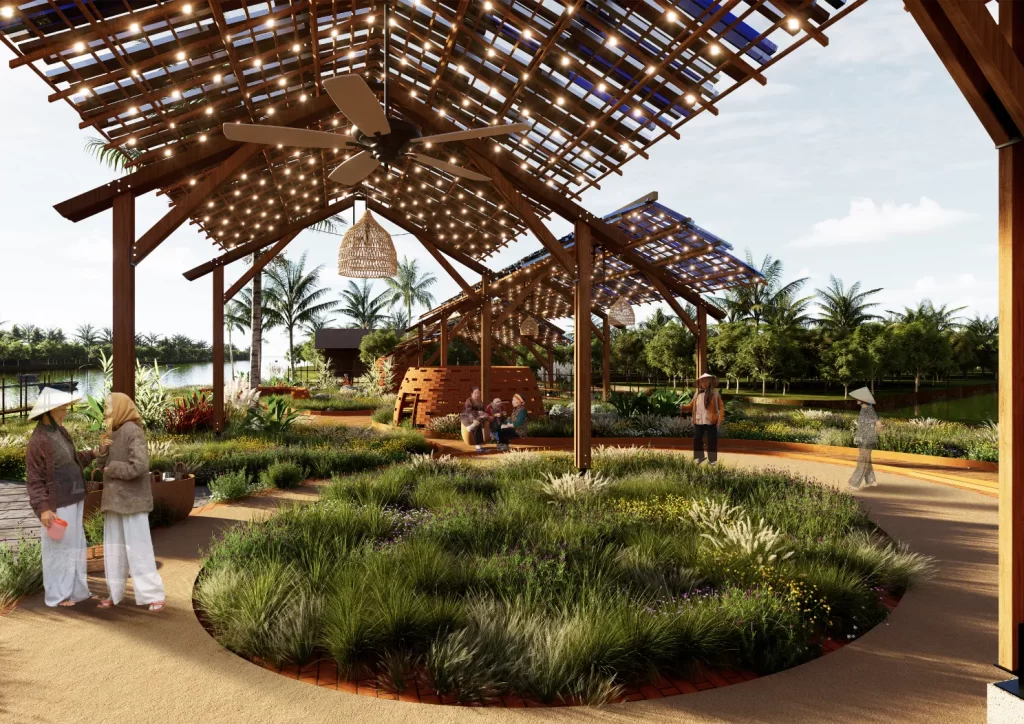
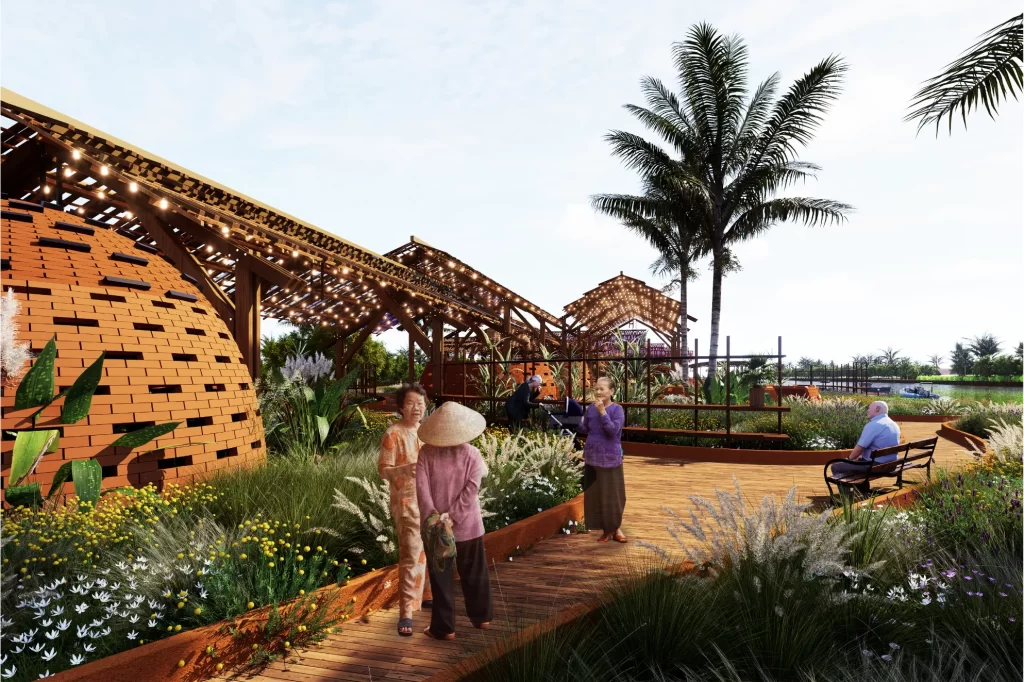
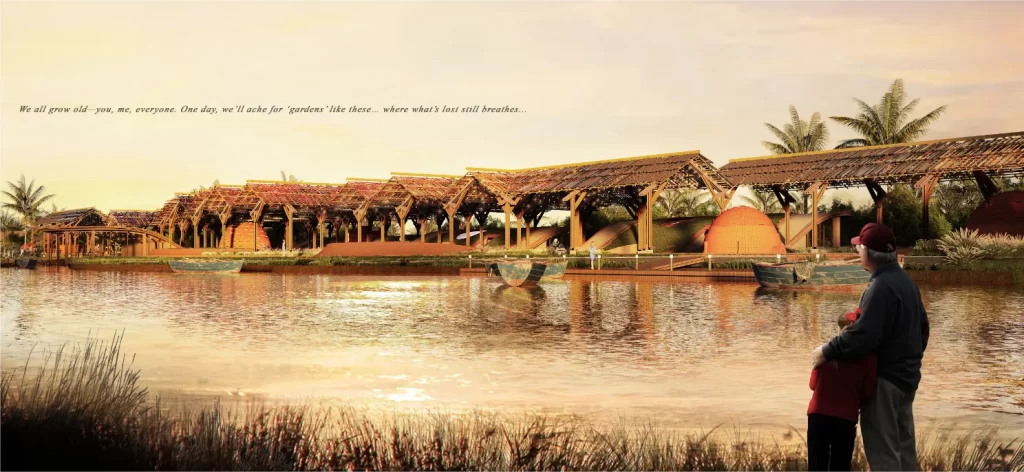
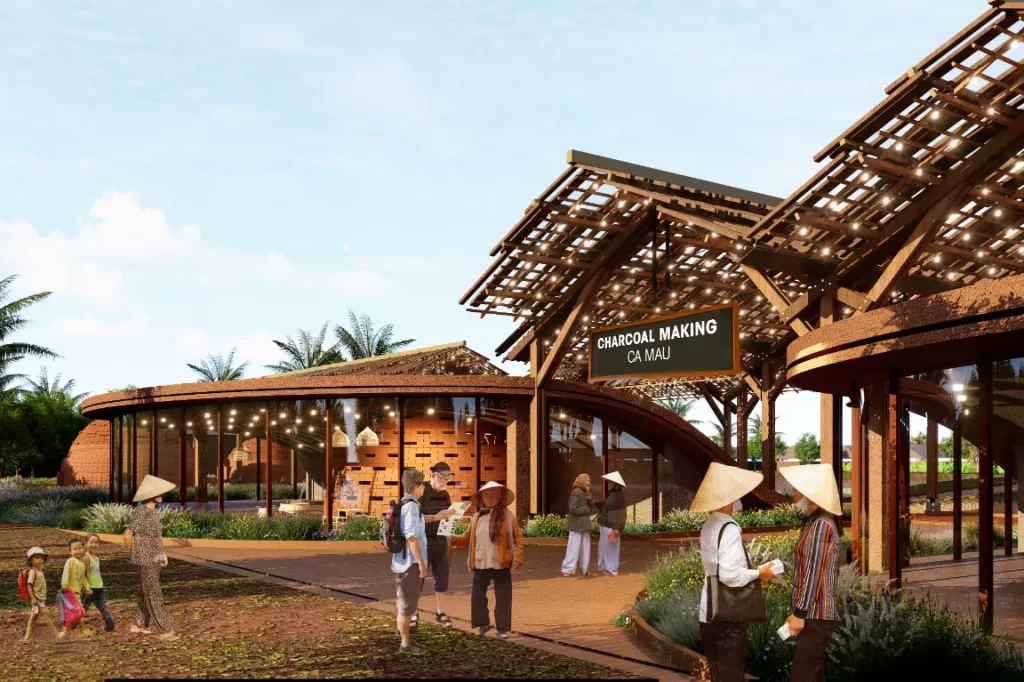
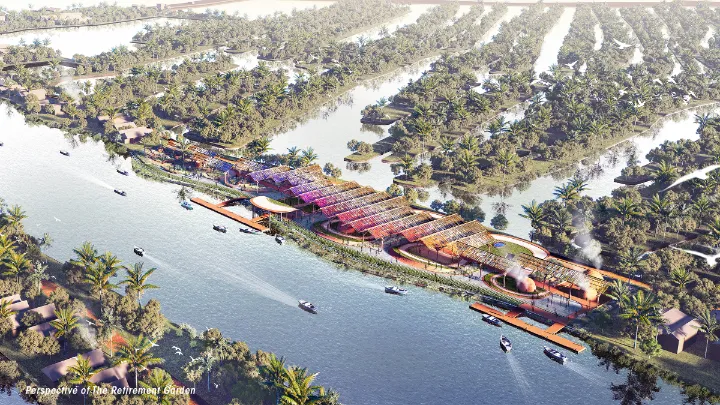
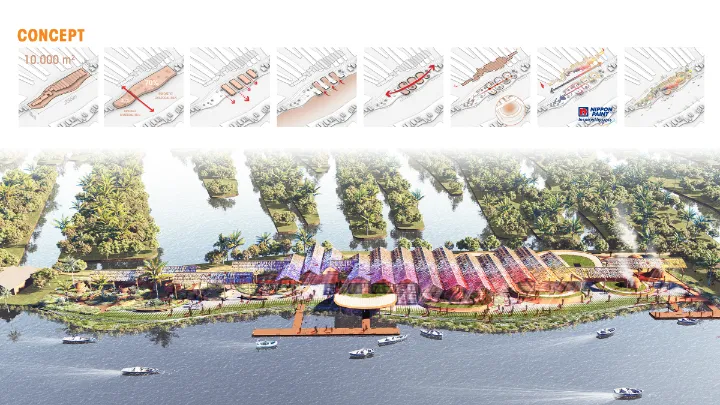
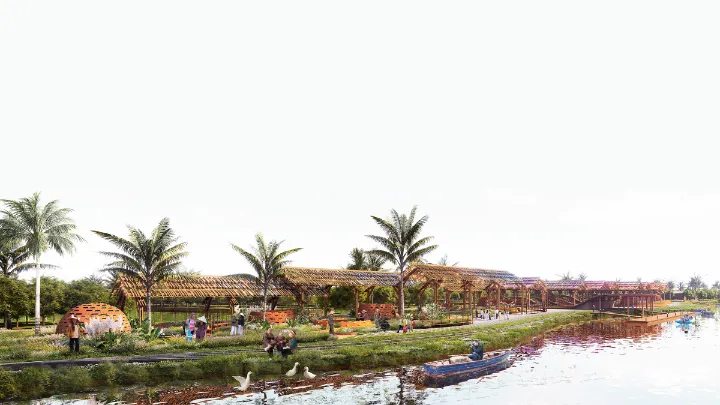
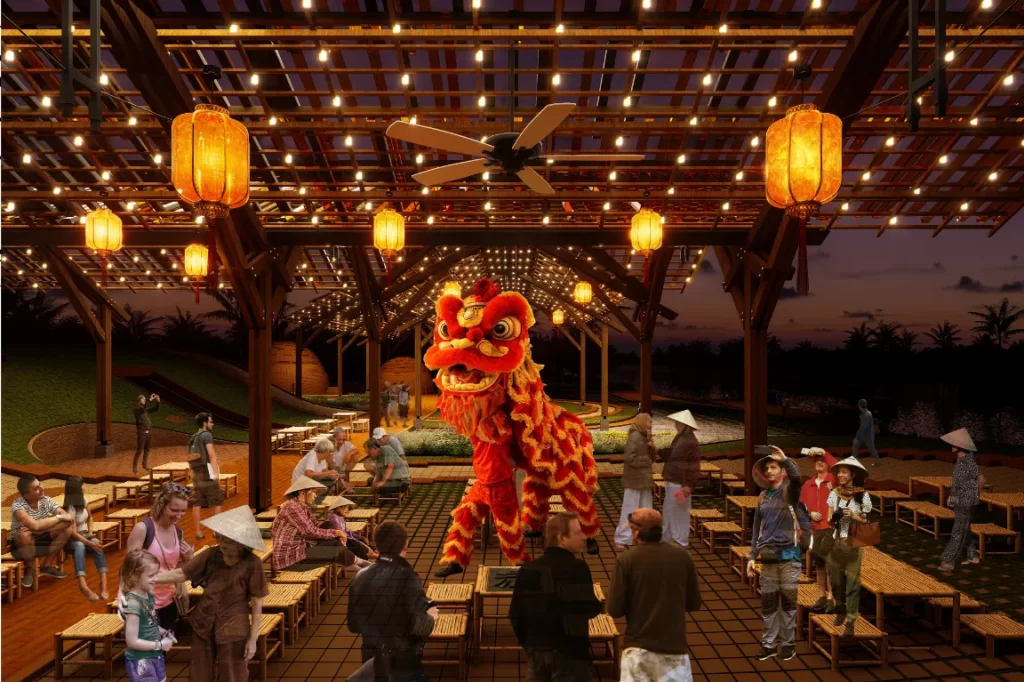
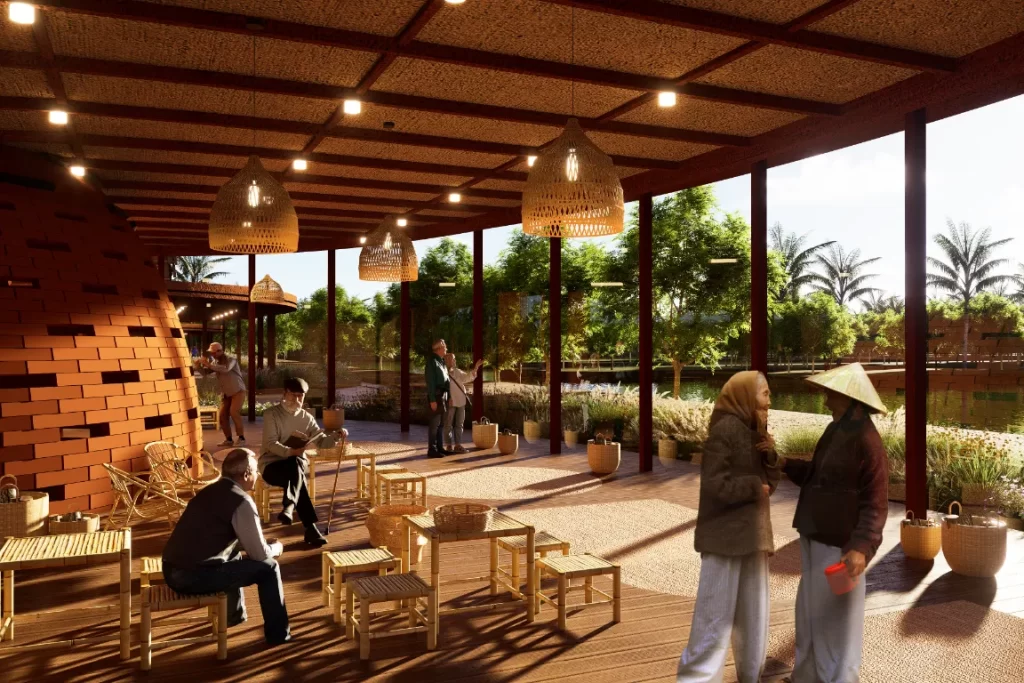
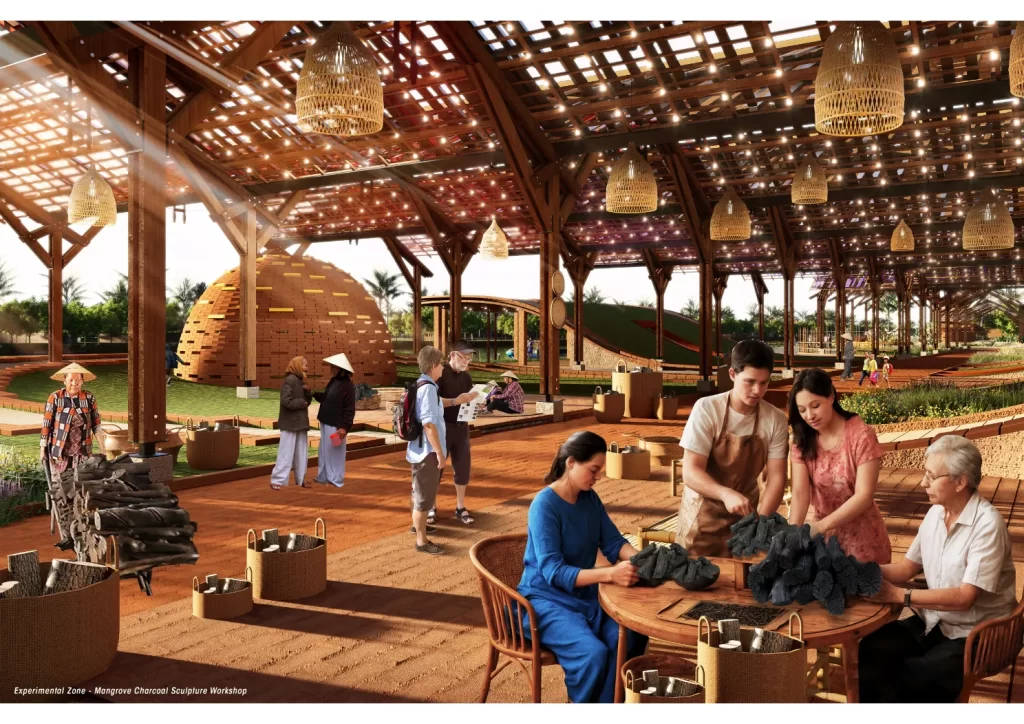
Showcase your design to an international audience
SUBMIT NOW
Image: Agrapolis Urban Permaculture Farm by David Johanes Palar
Top
PROJECT: GLORIOUS ASHES 1. THE RETIREMENT GARDEN We often invest in playgrounds for children, but have we ever considered creating “playgrounds” for the elderly? With a rapidly aging population, creating areas for them is essential. The Retirement Garden offers a “garden” where seniors can connect, addressing aging challenges. It rests on three pillars: history (merging old and new), identity (celebrating local culture), and community (bridging generations). Instead of tearing down and rebuilding, it reuses existing resources to preserve cultural values. Guided by four principles—Retire, Preserve, Re-arrangement, Repurpose—it features three zones: Joyful Living Garden (memories, spirituality), Healthy Living Garden (sports, meditation), and Meaningful Living Garden (kindergarten, workshops, cultural preservation). Beyond architecture, it fosters a tight-knit community that honors the elderly. 2. GLORIOUS ASHES Location: 2/9 Mangrove Charcoal Cooperative, Cà Mau – Area: 1,200 m². 3. REBIRTH FROM CHARCOAL KILN HERITAGE The design highlights the curves and spirals of charcoal kilns, etched in local memory. It splits into two zones: 30% original (preserving authentic architecture) and 70% innovative (linking past and present with retained roofs, recycled materials, and handicraft workshops). As a living museum, the Retirement Garden lets visitors experience charcoal production, join sculpture workshops, and hear elders’ stories, revealing Vietnamese cultural depths. The roof design draws from the existing structure: functional parts stay, damaged ones are replaced with transparent plastic bars coated in Nippon paint. This blends solid and void, old and new, symbolizing layered meanings and letting visitors live under the shade like locals. The architectural solution forms a “rainbow light forest” using the current roof, transparent plastic, and Nippon paint for shade and airflow. Sunlight through the roof enlivens the space, reflecting the mangrove charcoal craft and local life. Do the Elderly Really Retire? The project is not a place for the elderly to fully retire or rely solely on pensions. Instead, it repurposes old charcoal kilns—their former workplaces, now facing relocation risks—into a meaningful new space. Here, they have the choice to continue charcoal-making or not, and if they do, it is with a fresh perspective and purpose. My goal is to shift their perception of this work: from viewing it as a ‘common labor’ to feeling pride in its role as a vital part of the nation’s cultural heritage. Has Income Improved for Local Charcoal Workers? Yes. By transitioning from traditional charcoal kilns to the Retirement Garden space, the project does not reduce their income but enhances it through elevating the value of mangrove charcoal, tourism-focused workshops, and heritage preservation. They continue producing charcoal in cleaner, public-oriented spaces linked to tourism and cultural pride. The project is not solely about financial gain—it also empowers them to take pride in their craft, representing Ca Mau’s identity and contributing to a global narrative. How Will Their Lives Change After the Retirement Garden? They will still age, and some may continue making charcoal while others may not. However, through the Retirement Garden, their perspective on this work will shift—from viewing it as a 'common' job to feeling proud because it is an essential part of the nation’s cultural heritage. I want them to feel pride—pride in their craft, pride in how it represents Ca Mau, and pride that it is now part of a global narrative. The 'Retirement Garden' is a rebirth for melaleuca charcoal and the traditional craft village. It preserves our culture, increases their income, and gives them a sense of dignity and purpose in their work during old age. 4. CONCLUSION – HOPE FROM THE ASHES “Glorious Ashes” is more than architecture – it’s a promise of revival. From Cà Mau, where mangrove charcoal was once a fading trade, this project now shines on the global cultural stage. I hope it inspires younger generations to value spaces for elders – those who shaped our history.
THE RETIREMENT GARDEN: A COMMUNITY SPACE FOR SENIORS IN THE FORM OF A "GARDEN"
In Ca Mau, Vietnam’s southernmost region, youth are leaving, abandoning the elderly and children. The century-old mangrove charcoal trade is fading due to sustainable development and clean energy shifts. The cooperative faces relocation after a 2022 fire and 2024 zoning plans, with hazardous conditions harming workers’ health. The Retirement Garden transforms this space, turning mangrove charcoal into a high-end product—exported to Japan for tea ceremonies, used in five-star restaurants, and crafted into art. This boosts income and national pride, making mangrove charcoal a global cultural symbol.
As architects, we don’t just build spaces – we build legacies. “Glorious Ashes” reminds us that today’s gardens are tomorrow’s heritage. Who knows? Perhaps one day, we too will need such sanctuaries to tend the seeds of our own stories.


















